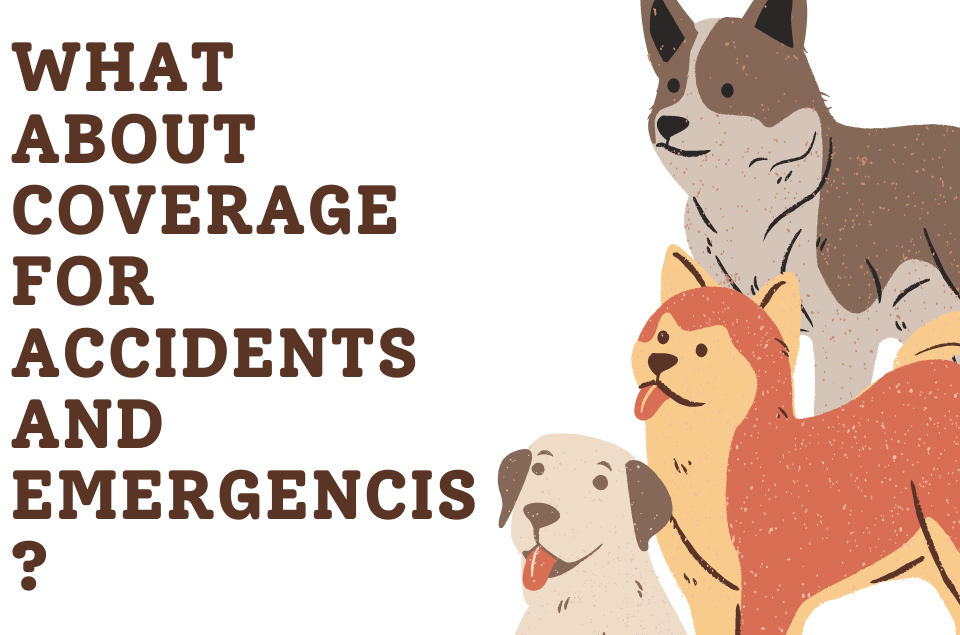
What about coverage for accidents and emergencies?
When it comes to dog insurance, coverage for accidents and emergencies is crucial. Let’s dive into the details:
- Accidents:
- Accidents can happen unexpectedly, whether your dog slips and falls, gets hit by a car, or ingests something harmful. Insurance coverage for accidents typically includes:
- Emergency vet visits: If your dog needs immediate medical attention due to an accident, insurance helps cover the costs.
- Diagnostic tests: X-rays, blood work, and other tests are essential for diagnosing injuries sustained during accidents.
- Surgery and treatment: Whether it’s setting a broken bone or stitching up a wound, insurance ensures your dog receives necessary surgical procedures.
- Medications: Pain relief, antibiotics, and other medications prescribed after an accident are covered.
- Rehabilitation: Some policies include coverage for physical therapy or rehabilitation if your dog requires it.
- Accidents can happen unexpectedly, whether your dog slips and falls, gets hit by a car, or ingests something harmful. Insurance coverage for accidents typically includes:
- Emergencies:
- Emergencies can arise suddenly, and having insurance provides peace of mind. Coverage for emergencies includes:
- Poisoning: If your dog ingests something toxic, emergency treatment is essential. Insurance covers the costs of decontamination and supportive care.
- Bloat (Gastric Dilatation-Volvulus): This life-threatening condition requires immediate surgery. Insurance helps cover the expenses.
- Foreign body ingestion: Dogs sometimes swallow objects they shouldn’t. Insurance covers diagnostic tests, surgery, and follow-up care.
- Heatstroke: In hot climates, dogs can suffer from heatstroke. Emergency treatment, including IV fluids and cooling measures, is covered.
- Seizures and other sudden health crises: Insurance ensures your dog receives prompt medical attention during emergencies.
- Emergencies can arise suddenly, and having insurance provides peace of mind. Coverage for emergencies includes:
- Choosing the Right Coverage:
- When selecting a dog insurance policy, consider the following:
- Accident-only coverage: Some policies focus solely on accidents, while others include both accidents and illnesses.
- Annual limits: Check the maximum amount the insurance will pay out per year.
- Waiting periods: Understand any waiting periods before coverage kicks in.
- Deductibles: Decide on a deductible amount that aligns with your budget.
- Reimbursement rates: Choose a percentage (e.g., 70%, 80%, or 90%) for reimbursement.
- When selecting a dog insurance policy, consider the following:
Remember that dog insurance is an investment in your pet’s well-being. It ensures that you can provide timely care without worrying about the financial burden. Always read policy terms carefully and choose a plan that suits your dog’s needs and your budget. 🐶🏥
I hope this information helps you understand the coverage for accidents and emergencies in dog insurance. If you have any more questions or need further assistance, feel free to ask! 😊

binance registration
Your article helped me a lot Thanks!